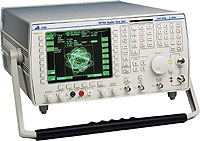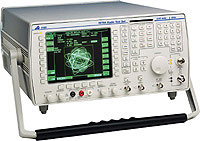- TestEquityHome
- VIAVI (IFR) 2968 TETRA Radio Test Set
- VIAVI (IFR) 2968 TETRA Radio Test Set
Rent our equipment. Own your results.
As the world’s largest test and measurement distributor, our engineers, technicians, and specialists support thousands of instruments from the industry’s top OEM brands in our fully accredited in-house calibration lab.
-
Fast Delivery -
Product Support -
Competitive prices
RELATED PRODUCTS
{"id":3442830934094,"title":"3Z Telecom RFA-1000 GPS Antenna Alignment Tool","handle":"3z-telecom-rfa-1000","description":"","published_at":"2019-04-11T14:55:48+01:00","created_at":"2019-04-11T14:55:48+01:00","vendor":"VIAVI","type":"Antenna Alignment Tool","tags":["Antenna Alignment Tool","Manufacturer_VIAVI \/ Aeroflex","Product Type_Antenna Alignment Tool","Rental","UK Rental","VIAVI \/ Aeroflex"],"price":0,"price_min":0,"price_max":0,"available":true,"price_varies":false,"compare_at_price":null,"compare_at_price_min":0,"compare_at_price_max":0,"compare_at_price_varies":false,"variants":[{"id":27720142291022,"title":"Default Title","option1":"Default Title","option2":null,"option3":null,"sku":"3ZT-RFA1000","requires_shipping":false,"taxable":false,"featured_image":null,"available":true,"name":"3Z Telecom RFA-1000 GPS Antenna Alignment Tool","public_title":null,"options":["Default Title"],"price":0,"weight":0,"compare_at_price":null,"inventory_management":null,"barcode":"","requires_selling_plan":false,"selling_plan_allocations":[]}],"images":["\/\/vas.testequity.co.uk\/cdn\/shop\/products\/3ZTelecom_RF-Aligner.jpg?v=1689945327"],"featured_image":"\/\/vas.testequity.co.uk\/cdn\/shop\/products\/3ZTelecom_RF-Aligner.jpg?v=1689945327","options":["Title"],"media":[{"alt":"3Z Telecom RFA-1000 GPS Antenna Alignment Tool | MCS Rentals","id":22688574439502,"position":1,"preview_image":{"aspect_ratio":0.909,"height":330,"width":300,"src":"\/\/vas.testequity.co.uk\/cdn\/shop\/products\/3ZTelecom_RF-Aligner.jpg?v=1689945327"},"aspect_ratio":0.909,"height":330,"media_type":"image","src":"\/\/vas.testequity.co.uk\/cdn\/shop\/products\/3ZTelecom_RF-Aligner.jpg?v=1689945327","width":300}],"requires_selling_plan":false,"selling_plan_groups":[],"content":""}
Rent our equipment. Own your results.
As the world’s largest test and measurement distributor, our engineers, technicians, and specialists support thousands of instruments from the industry’s top OEM brands in our fully accredited in-house calibration lab.
{"id":3442844631118,"title":"3Z Telecom RFV-2000 Antenna Alignment Tool","handle":"3z-telecom-rfv2000","description":"","published_at":"2019-04-11T15:22:22+01:00","created_at":"2019-04-11T15:22:22+01:00","vendor":"VIAVI","type":"Antenna Alignment Tool","tags":["Antenna Alignment Tool","Manufacturer_VIAVI \/ Aeroflex","Product Type_Antenna Alignment Tool","Rental","UK Rental","VIAVI \/ Aeroflex"],"price":0,"price_min":0,"price_max":0,"available":true,"price_varies":false,"compare_at_price":null,"compare_at_price_min":0,"compare_at_price_max":0,"compare_at_price_varies":false,"variants":[{"id":40256243597390,"title":"Default Title","option1":"Default Title","option2":null,"option3":null,"sku":"3ZT-RFV2000","requires_shipping":false,"taxable":false,"featured_image":null,"available":true,"name":"3Z Telecom RFV-2000 Antenna Alignment Tool","public_title":null,"options":["Default Title"],"price":0,"weight":0,"compare_at_price":null,"inventory_management":null,"barcode":"","requires_selling_plan":false,"selling_plan_allocations":[]}],"images":["\/\/vas.testequity.co.uk\/cdn\/shop\/products\/3ZT-RFV2000.png?v=1689945324"],"featured_image":"\/\/vas.testequity.co.uk\/cdn\/shop\/products\/3ZT-RFV2000.png?v=1689945324","options":["Title"],"media":[{"alt":"3Z Telecom RFV-2000 Antenna Alignment Tool | MCS Rentals","id":22688574406734,"position":1,"preview_image":{"aspect_ratio":1.691,"height":414,"width":700,"src":"\/\/vas.testequity.co.uk\/cdn\/shop\/products\/3ZT-RFV2000.png?v=1689945324"},"aspect_ratio":1.691,"height":414,"media_type":"image","src":"\/\/vas.testequity.co.uk\/cdn\/shop\/products\/3ZT-RFV2000.png?v=1689945324","width":700}],"requires_selling_plan":false,"selling_plan_groups":[],"content":""}
Rent our equipment. Own your results.
As the world’s largest test and measurement distributor, our engineers, technicians, and specialists support thousands of instruments from the industry’s top OEM brands in our fully accredited in-house calibration lab.
{"id":3526145081422,"title":"Agilent 34401A Digital Multimeter, 6½ Digit","handle":"keysight-agilent-34401a-digital-multimeter-6-digit","description":"","published_at":"2019-04-23T15:37:06+01:00","created_at":"2019-04-23T15:51:34+01:00","vendor":"Keysight","type":"Multimeters","tags":["Keysight","Manufacturer_Keysight","Multimeters","Product Type_Multimeters","Rental","UK Rental"],"price":0,"price_min":0,"price_max":0,"available":true,"price_varies":false,"compare_at_price":null,"compare_at_price_min":0,"compare_at_price_max":0,"compare_at_price_varies":false,"variants":[{"id":28050814795854,"title":"Default Title","option1":"Default Title","option2":null,"option3":null,"sku":"34401A","requires_shipping":false,"taxable":false,"featured_image":null,"available":true,"name":"Agilent 34401A Digital Multimeter, 6½ Digit","public_title":null,"options":["Default Title"],"price":0,"weight":0,"compare_at_price":null,"inventory_management":null,"barcode":"","requires_selling_plan":false,"selling_plan_allocations":[]}],"images":["\/\/vas.testequity.co.uk\/cdn\/shop\/files\/5901bf5c8ab8a.jpg?v=1690273858"],"featured_image":"\/\/vas.testequity.co.uk\/cdn\/shop\/files\/5901bf5c8ab8a.jpg?v=1690273858","options":["Title"],"media":[{"alt":null,"id":22691210723406,"position":1,"preview_image":{"aspect_ratio":1.5,"height":800,"width":1200,"src":"\/\/vas.testequity.co.uk\/cdn\/shop\/files\/5901bf5c8ab8a.jpg?v=1690273858"},"aspect_ratio":1.5,"height":800,"media_type":"image","src":"\/\/vas.testequity.co.uk\/cdn\/shop\/files\/5901bf5c8ab8a.jpg?v=1690273858","width":1200}],"requires_selling_plan":false,"selling_plan_groups":[],"content":""}
Rent our equipment. Own your results.
As the world’s largest test and measurement distributor, our engineers, technicians, and specialists support thousands of instruments from the industry’s top OEM brands in our fully accredited in-house calibration lab.
{"id":3526208520270,"title":"Agilent 54810A Infiniium Oscilloscope, 500 MHz","handle":"keysight-agilent-54810a-infiniium-oscilloscope","description":"","published_at":"2019-04-23T16:17:39+01:00","created_at":"2019-04-23T16:26:19+01:00","vendor":"Keysight","type":"Oscilloscopes","tags":["Keysight","Manufacturer_Keysight","Oscilloscopes","Product Type_Oscilloscopes","Rental","UK Rental"],"price":0,"price_min":0,"price_max":0,"available":true,"price_varies":false,"compare_at_price":null,"compare_at_price_min":0,"compare_at_price_max":0,"compare_at_price_varies":false,"variants":[{"id":28051078053966,"title":"Default Title","option1":"Default Title","option2":null,"option3":null,"sku":"54810A","requires_shipping":false,"taxable":false,"featured_image":null,"available":true,"name":"Agilent 54810A Infiniium Oscilloscope, 500 MHz","public_title":null,"options":["Default Title"],"price":0,"weight":0,"compare_at_price":null,"inventory_management":null,"barcode":null,"requires_selling_plan":false,"selling_plan_allocations":[]}],"images":["\/\/vas.testequity.co.uk\/cdn\/shop\/products\/s-l1200.webp?v=1689945460"],"featured_image":"\/\/vas.testequity.co.uk\/cdn\/shop\/products\/s-l1200.webp?v=1689945460","options":["Title"],"media":[{"alt":"Agilent 54810A Infiniium Oscilloscope, 500 MHz | MCS Rentals","id":22688576471118,"position":1,"preview_image":{"aspect_ratio":1.676,"height":716,"width":1200,"src":"\/\/vas.testequity.co.uk\/cdn\/shop\/products\/s-l1200.webp?v=1689945460"},"aspect_ratio":1.676,"height":716,"media_type":"image","src":"\/\/vas.testequity.co.uk\/cdn\/shop\/products\/s-l1200.webp?v=1689945460","width":1200}],"requires_selling_plan":false,"selling_plan_groups":[],"content":""}
Rent our equipment. Own your results.
As the world’s largest test and measurement distributor, our engineers, technicians, and specialists support thousands of instruments from the industry’s top OEM brands in our fully accredited in-house calibration lab.
{"id":3894675963982,"title":"Agilent N3970A Handheld Optical Power Meter","handle":"agilent-n3970a-handheld-optical-power-meter","description":"","published_at":"2019-06-28T09:34:25+01:00","created_at":"2019-06-28T10:00:09+01:00","vendor":"Keysight","type":"Power Meters","tags":["Keysight","Manufacturer_Keysight","Power Meters","Product Type_Power Meters","Rental","UK Rental"],"price":0,"price_min":0,"price_max":0,"available":true,"price_varies":false,"compare_at_price":null,"compare_at_price_min":0,"compare_at_price_max":0,"compare_at_price_varies":false,"variants":[{"id":29269348843598,"title":"Default Title","option1":"Default Title","option2":null,"option3":null,"sku":"N3970A","requires_shipping":false,"taxable":false,"featured_image":null,"available":true,"name":"Agilent N3970A Handheld Optical Power Meter","public_title":null,"options":["Default Title"],"price":0,"weight":0,"compare_at_price":null,"inventory_management":null,"barcode":null,"requires_selling_plan":false,"selling_plan_allocations":[]}],"images":["\/\/vas.testequity.co.uk\/cdn\/shop\/products\/AGILENTN3970A.jpg?v=1689945482"],"featured_image":"\/\/vas.testequity.co.uk\/cdn\/shop\/products\/AGILENTN3970A.jpg?v=1689945482","options":["Title"],"media":[{"alt":"Agilent N3970A Handheld Optical Power Meter | MCS Rentals","id":22688576700494,"position":1,"preview_image":{"aspect_ratio":0.878,"height":600,"width":527,"src":"\/\/vas.testequity.co.uk\/cdn\/shop\/products\/AGILENTN3970A.jpg?v=1689945482"},"aspect_ratio":0.878,"height":600,"media_type":"image","src":"\/\/vas.testequity.co.uk\/cdn\/shop\/products\/AGILENTN3970A.jpg?v=1689945482","width":527}],"requires_selling_plan":false,"selling_plan_groups":[],"content":""}
Rent our equipment. Own your results.
As the world’s largest test and measurement distributor, our engineers, technicians, and specialists support thousands of instruments from the industry’s top OEM brands in our fully accredited in-house calibration lab.
{"id":4829809442894,"title":"Aim-TTi CPX400A 420W Dual Output DC Power Supply","handle":"aim-tti-cpx400a","description":"","published_at":"2020-09-11T14:16:43+01:00","created_at":"2020-09-11T14:14:38+01:00","vendor":"Aim-TTi","type":"Power Supplies","tags":["Aim-TTi","Manufacturer_Aim-TTi","Power Supplies","Product Type_Power Supplies","Rental","UK Rental"],"price":0,"price_min":0,"price_max":0,"available":true,"price_varies":false,"compare_at_price":null,"compare_at_price_min":0,"compare_at_price_max":0,"compare_at_price_varies":false,"variants":[{"id":32607743574094,"title":"Default Title","option1":"Default Title","option2":null,"option3":null,"sku":"CPX400A","requires_shipping":false,"taxable":false,"featured_image":null,"available":true,"name":"Aim-TTi CPX400A 420W Dual Output DC Power Supply","public_title":null,"options":["Default Title"],"price":0,"weight":0,"compare_at_price":null,"inventory_management":null,"barcode":null,"requires_selling_plan":false,"selling_plan_allocations":[]}],"images":["\/\/vas.testequity.co.uk\/cdn\/shop\/products\/CPX400SA-1000px.jpg?v=1689945520"],"featured_image":"\/\/vas.testequity.co.uk\/cdn\/shop\/products\/CPX400SA-1000px.jpg?v=1689945520","options":["Title"],"media":[{"alt":"Aim-TTi CPX400A 420W Dual Output DC Power Supply","id":22688577126478,"position":1,"preview_image":{"aspect_ratio":1.0,"height":1000,"width":1000,"src":"\/\/vas.testequity.co.uk\/cdn\/shop\/products\/CPX400SA-1000px.jpg?v=1689945520"},"aspect_ratio":1.0,"height":1000,"media_type":"image","src":"\/\/vas.testequity.co.uk\/cdn\/shop\/products\/CPX400SA-1000px.jpg?v=1689945520","width":1000}],"requires_selling_plan":false,"selling_plan_groups":[],"content":""}
Rent our equipment. Own your results.
As the world’s largest test and measurement distributor, our engineers, technicians, and specialists support thousands of instruments from the industry’s top OEM brands in our fully accredited in-house calibration lab.
{"id":4829765042254,"title":"Aim-TTi CPX400D 840W Dual Output DC Power Supply","handle":"aim-tti-cpx400d","description":"","published_at":"2020-09-11T11:51:03+01:00","created_at":"2020-09-11T11:48:53+01:00","vendor":"Aim-TTi","type":"Power Supplies","tags":["Aim-TTi","Manufacturer_Aim-TTi","Power Supplies","Product Type_Power Supplies","Rental","UK Rental"],"price":0,"price_min":0,"price_max":0,"available":true,"price_varies":false,"compare_at_price":null,"compare_at_price_min":0,"compare_at_price_max":0,"compare_at_price_varies":false,"variants":[{"id":32607589302350,"title":"Default Title","option1":"Default Title","option2":null,"option3":null,"sku":"CPX400D","requires_shipping":false,"taxable":false,"featured_image":null,"available":true,"name":"Aim-TTi CPX400D 840W Dual Output DC Power Supply","public_title":null,"options":["Default Title"],"price":0,"weight":0,"compare_at_price":null,"inventory_management":null,"barcode":null,"requires_selling_plan":false,"selling_plan_allocations":[]}],"images":["\/\/vas.testequity.co.uk\/cdn\/shop\/files\/cpx400dp-f-350.jpg?v=1690276021"],"featured_image":"\/\/vas.testequity.co.uk\/cdn\/shop\/files\/cpx400dp-f-350.jpg?v=1690276021","options":["Title"],"media":[{"alt":null,"id":22691364995150,"position":1,"preview_image":{"aspect_ratio":1.4,"height":250,"width":350,"src":"\/\/vas.testequity.co.uk\/cdn\/shop\/files\/cpx400dp-f-350.jpg?v=1690276021"},"aspect_ratio":1.4,"height":250,"media_type":"image","src":"\/\/vas.testequity.co.uk\/cdn\/shop\/files\/cpx400dp-f-350.jpg?v=1690276021","width":350}],"requires_selling_plan":false,"selling_plan_groups":[],"content":""}
Rent our equipment. Own your results.
As the world’s largest test and measurement distributor, our engineers, technicians, and specialists support thousands of instruments from the industry’s top OEM brands in our fully accredited in-house calibration lab.
{"id":4829754720334,"title":"Aim-TTi CPX400DP 840W Digital Bench\/ System DC Power Supply","handle":"aim-tti-cpx400dp","description":"","published_at":"2020-09-11T11:25:22+01:00","created_at":"2020-09-11T11:19:09+01:00","vendor":"Aim-TTi","type":"Power Supplies","tags":["Aim-TTi","Manufacturer_Aim-TTi","Power Supplies","Product Type_Power Supplies","Rental","UK Rental"],"price":0,"price_min":0,"price_max":0,"available":true,"price_varies":false,"compare_at_price":null,"compare_at_price_min":0,"compare_at_price_max":0,"compare_at_price_varies":false,"variants":[{"id":32607563874382,"title":"Default Title","option1":"Default Title","option2":null,"option3":null,"sku":"CPX400DP","requires_shipping":false,"taxable":false,"featured_image":null,"available":true,"name":"Aim-TTi CPX400DP 840W Digital Bench\/ System DC Power Supply","public_title":null,"options":["Default Title"],"price":0,"weight":0,"compare_at_price":null,"inventory_management":null,"barcode":null,"requires_selling_plan":false,"selling_plan_allocations":[]}],"images":["\/\/vas.testequity.co.uk\/cdn\/shop\/files\/cpx400dp-f-350_1dca2171-01dc-4333-9de9-06adff680865.jpg?v=1690276031"],"featured_image":"\/\/vas.testequity.co.uk\/cdn\/shop\/files\/cpx400dp-f-350_1dca2171-01dc-4333-9de9-06adff680865.jpg?v=1690276031","options":["Title"],"media":[{"alt":null,"id":22691366699086,"position":1,"preview_image":{"aspect_ratio":1.4,"height":250,"width":350,"src":"\/\/vas.testequity.co.uk\/cdn\/shop\/files\/cpx400dp-f-350_1dca2171-01dc-4333-9de9-06adff680865.jpg?v=1690276031"},"aspect_ratio":1.4,"height":250,"media_type":"image","src":"\/\/vas.testequity.co.uk\/cdn\/shop\/files\/cpx400dp-f-350_1dca2171-01dc-4333-9de9-06adff680865.jpg?v=1690276031","width":350}],"requires_selling_plan":false,"selling_plan_groups":[],"content":""}
Rent our equipment. Own your results.
As the world’s largest test and measurement distributor, our engineers, technicians, and specialists support thousands of instruments from the industry’s top OEM brands in our fully accredited in-house calibration lab.
{"id":4829766975566,"title":"Aim-TTi CPX400SA 420 W Single Output Power Supply","handle":"aim-tti-cpx400sa","description":"","published_at":"2020-09-11T12:08:41+01:00","created_at":"2020-09-11T11:54:50+01:00","vendor":"Aim-TTi","type":"Power Supplies","tags":["Aim-TTi","Manufacturer_Aim-TTi","Power Supplies","Product Type_Power Supplies","Rental","UK Rental"],"price":0,"price_min":0,"price_max":0,"available":true,"price_varies":false,"compare_at_price":null,"compare_at_price_min":0,"compare_at_price_max":0,"compare_at_price_varies":false,"variants":[{"id":32607593463886,"title":"Default Title","option1":"Default Title","option2":null,"option3":null,"sku":"CPX400SA","requires_shipping":false,"taxable":false,"featured_image":null,"available":true,"name":"Aim-TTi CPX400SA 420 W Single Output Power Supply","public_title":null,"options":["Default Title"],"price":0,"weight":0,"compare_at_price":null,"inventory_management":null,"barcode":null,"requires_selling_plan":false,"selling_plan_allocations":[]}],"images":["\/\/vas.testequity.co.uk\/cdn\/shop\/products\/CPX400SA-1000px_74dbc572-4507-4797-8853-322c32d8e8ee.jpg?v=1689945522"],"featured_image":"\/\/vas.testequity.co.uk\/cdn\/shop\/products\/CPX400SA-1000px_74dbc572-4507-4797-8853-322c32d8e8ee.jpg?v=1689945522","options":["Title"],"media":[{"alt":null,"id":22688577159246,"position":1,"preview_image":{"aspect_ratio":1.0,"height":1000,"width":1000,"src":"\/\/vas.testequity.co.uk\/cdn\/shop\/products\/CPX400SA-1000px_74dbc572-4507-4797-8853-322c32d8e8ee.jpg?v=1689945522"},"aspect_ratio":1.0,"height":1000,"media_type":"image","src":"\/\/vas.testequity.co.uk\/cdn\/shop\/products\/CPX400SA-1000px_74dbc572-4507-4797-8853-322c32d8e8ee.jpg?v=1689945522","width":1000}],"requires_selling_plan":false,"selling_plan_groups":[],"content":""}
Rent our equipment. Own your results.
As the world’s largest test and measurement distributor, our engineers, technicians, and specialists support thousands of instruments from the industry’s top OEM brands in our fully accredited in-house calibration lab.
{"id":3484330688590,"title":"Anritsu MS2711D Handheld Spectrum Analyser","handle":"anritsu-ms2711d","description":"","published_at":"2019-04-15T09:59:04+01:00","created_at":"2019-04-15T10:02:00+01:00","vendor":"Anritsu","type":"Spectrum Analysers","tags":["Anritsu","Manufacturer_Anritsu","Product Type_Spectrum Analysers","Rental","Spectrum Analysers","UK Rental"],"price":0,"price_min":0,"price_max":0,"available":true,"price_varies":false,"compare_at_price":null,"compare_at_price_min":0,"compare_at_price_max":0,"compare_at_price_varies":false,"variants":[{"id":27882397499470,"title":"Default Title","option1":"Default Title","option2":null,"option3":null,"sku":"ANR-MS2711D","requires_shipping":false,"taxable":false,"featured_image":null,"available":true,"name":"Anritsu MS2711D Handheld Spectrum Analyser","public_title":null,"options":["Default Title"],"price":0,"weight":0,"compare_at_price":null,"inventory_management":null,"barcode":null,"requires_selling_plan":false,"selling_plan_allocations":[]}],"images":["\/\/vas.testequity.co.uk\/cdn\/shop\/products\/ms2711d-spectrum-master.png?v=1689945632"],"featured_image":"\/\/vas.testequity.co.uk\/cdn\/shop\/products\/ms2711d-spectrum-master.png?v=1689945632","options":["Title"],"media":[{"alt":"Anritsu MS2711D Handheld Spectrum Analyser, 100 kHz - 3 GHz | MCS Rentals","id":22688578568270,"position":1,"preview_image":{"aspect_ratio":1.355,"height":310,"width":420,"src":"\/\/vas.testequity.co.uk\/cdn\/shop\/products\/ms2711d-spectrum-master.png?v=1689945632"},"aspect_ratio":1.355,"height":310,"media_type":"image","src":"\/\/vas.testequity.co.uk\/cdn\/shop\/products\/ms2711d-spectrum-master.png?v=1689945632","width":420}],"requires_selling_plan":false,"selling_plan_groups":[],"content":""}
Rent our equipment. Own your results.
As the world’s largest test and measurement distributor, our engineers, technicians, and specialists support thousands of instruments from the industry’s top OEM brands in our fully accredited in-house calibration lab.
{"id":3484344352846,"title":"Anritsu MS2726C Spectrum Analyser","handle":"anritsu-ms2726c-9-khz-43-ghz-spectrum-analyser","description":"","published_at":"2019-04-15T10:59:54+01:00","created_at":"2019-04-15T11:07:06+01:00","vendor":"Anritsu","type":"Spectrum Analysers","tags":["Anritsu","Manufacturer_Anritsu","Product Type_Spectrum Analysers","Rental","Spectrum Analysers","UK Rental"],"price":0,"price_min":0,"price_max":0,"available":true,"price_varies":false,"compare_at_price":null,"compare_at_price_min":0,"compare_at_price_max":0,"compare_at_price_varies":false,"variants":[{"id":27882515431502,"title":"Default Title","option1":"Default Title","option2":null,"option3":null,"sku":"ANR-MS2726C","requires_shipping":false,"taxable":true,"featured_image":null,"available":true,"name":"Anritsu MS2726C Spectrum Analyser","public_title":null,"options":["Default Title"],"price":0,"weight":0,"compare_at_price":null,"inventory_management":null,"barcode":null,"requires_selling_plan":false,"selling_plan_allocations":[]}],"images":["\/\/vas.testequity.co.uk\/cdn\/shop\/products\/ms2726c-spectrum-master.png?v=1689945630"],"featured_image":"\/\/vas.testequity.co.uk\/cdn\/shop\/products\/ms2726c-spectrum-master.png?v=1689945630","options":["Title"],"media":[{"alt":"Anritsu MS2726C Spectrum Analyser, 9 kHz - 43 GHz | MCS Rentals","id":22688578502734,"position":1,"preview_image":{"aspect_ratio":1.355,"height":310,"width":420,"src":"\/\/vas.testequity.co.uk\/cdn\/shop\/products\/ms2726c-spectrum-master.png?v=1689945630"},"aspect_ratio":1.355,"height":310,"media_type":"image","src":"\/\/vas.testequity.co.uk\/cdn\/shop\/products\/ms2726c-spectrum-master.png?v=1689945630","width":420}],"requires_selling_plan":false,"selling_plan_groups":[],"content":""}
Rent our equipment. Own your results.
As the world’s largest test and measurement distributor, our engineers, technicians, and specialists support thousands of instruments from the industry’s top OEM brands in our fully accredited in-house calibration lab.
{"id":3484378759246,"title":"Anritsu MW82119A PIM Master","handle":"anritsu-mw82119a-pim-master","description":"","published_at":"2019-04-15T12:06:52+01:00","created_at":"2019-04-15T13:48:12+01:00","vendor":"Anritsu","type":"PIM Masters","tags":["Anritsu","Manufacturer_Anritsu","PIM Masters","Product Type_PIM Masters","Rental","UK Rental"],"price":0,"price_min":0,"price_max":0,"available":true,"price_varies":false,"compare_at_price":null,"compare_at_price_min":0,"compare_at_price_max":0,"compare_at_price_varies":false,"variants":[{"id":40256244580430,"title":"Default Title","option1":"Default Title","option2":null,"option3":null,"sku":"MW82119A","requires_shipping":false,"taxable":false,"featured_image":null,"available":true,"name":"Anritsu MW82119A PIM Master","public_title":null,"options":["Default Title"],"price":0,"weight":0,"compare_at_price":null,"inventory_management":null,"barcode":null,"requires_selling_plan":false,"selling_plan_allocations":[]}],"images":["\/\/vas.testequity.co.uk\/cdn\/shop\/products\/mw82119a_hero2.png?v=1689945479"],"featured_image":"\/\/vas.testequity.co.uk\/cdn\/shop\/products\/mw82119a_hero2.png?v=1689945479","options":["Title"],"media":[{"alt":"Anritsu MW82119A PIM Master | MCS Rentals","id":22688576667726,"position":1,"preview_image":{"aspect_ratio":1.355,"height":310,"width":420,"src":"\/\/vas.testequity.co.uk\/cdn\/shop\/products\/mw82119a_hero2.png?v=1689945479"},"aspect_ratio":1.355,"height":310,"media_type":"image","src":"\/\/vas.testequity.co.uk\/cdn\/shop\/products\/mw82119a_hero2.png?v=1689945479","width":420}],"requires_selling_plan":false,"selling_plan_groups":[],"content":""}
Rent our equipment. Own your results.
As the world’s largest test and measurement distributor, our engineers, technicians, and specialists support thousands of instruments from the industry’s top OEM brands in our fully accredited in-house calibration lab.
{"id":3484380594254,"title":"Anritsu MW82119B PIM Master","handle":"anritsu-mw82119b-pim-master","description":"","published_at":"2019-04-15T13:54:59+01:00","created_at":"2019-04-15T14:02:22+01:00","vendor":"Anritsu","type":"PIM Masters","tags":["Anritsu","Manufacturer_Anritsu","PIM Masters","Product Type_PIM Masters","Rental","UK Rental"],"price":0,"price_min":0,"price_max":0,"available":true,"price_varies":false,"compare_at_price":null,"compare_at_price_min":0,"compare_at_price_max":0,"compare_at_price_varies":false,"variants":[{"id":40256244547662,"title":"Default Title","option1":"Default Title","option2":null,"option3":null,"sku":"MW82119B","requires_shipping":false,"taxable":false,"featured_image":null,"available":true,"name":"Anritsu MW82119B PIM Master","public_title":null,"options":["Default Title"],"price":0,"weight":0,"compare_at_price":null,"inventory_management":null,"barcode":null,"requires_selling_plan":false,"selling_plan_allocations":[]}],"images":["\/\/vas.testequity.co.uk\/cdn\/shop\/products\/pim-master-82119b-front-v1.png?v=1689945477"],"featured_image":"\/\/vas.testequity.co.uk\/cdn\/shop\/products\/pim-master-82119b-front-v1.png?v=1689945477","options":["Title"],"media":[{"alt":"Anritsu MW82119B PIM Master | MCS Rentals","id":22688576634958,"position":1,"preview_image":{"aspect_ratio":1.355,"height":310,"width":420,"src":"\/\/vas.testequity.co.uk\/cdn\/shop\/products\/pim-master-82119b-front-v1.png?v=1689945477"},"aspect_ratio":1.355,"height":310,"media_type":"image","src":"\/\/vas.testequity.co.uk\/cdn\/shop\/products\/pim-master-82119b-front-v1.png?v=1689945477","width":420}],"requires_selling_plan":false,"selling_plan_groups":[],"content":""}
Rent our equipment. Own your results.
As the world’s largest test and measurement distributor, our engineers, technicians, and specialists support thousands of instruments from the industry’s top OEM brands in our fully accredited in-house calibration lab.
{"id":3484463398990,"title":"Anritsu S331D Site Master","handle":"anritsu-s331d-site-master-cable-antenna-analyser","description":"","published_at":"2019-04-15T15:17:28+01:00","created_at":"2019-04-15T15:50:22+01:00","vendor":"Anritsu","type":"Cable \u0026 Antenna Analysers","tags":["Anritsu","Manufacturer_Anritsu","Product Type_Site Masters","Rental","Site Masters","UK Rental"],"price":0,"price_min":0,"price_max":0,"available":true,"price_varies":false,"compare_at_price":null,"compare_at_price_min":0,"compare_at_price_max":0,"compare_at_price_varies":false,"variants":[{"id":40256245432398,"title":"Default Title","option1":"Default Title","option2":null,"option3":null,"sku":"S331D","requires_shipping":false,"taxable":false,"featured_image":null,"available":true,"name":"Anritsu S331D Site Master","public_title":null,"options":["Default Title"],"price":0,"weight":0,"compare_at_price":null,"inventory_management":null,"barcode":null,"requires_selling_plan":false,"selling_plan_allocations":[]}],"images":["\/\/vas.testequity.co.uk\/cdn\/shop\/products\/s311d-site-master.png?v=1689945627"],"featured_image":"\/\/vas.testequity.co.uk\/cdn\/shop\/products\/s311d-site-master.png?v=1689945627","options":["Title"],"media":[{"alt":"Anritsu S331D Site Master, 2 MHz - 4 GHz | MCS Rentals","id":22688578469966,"position":1,"preview_image":{"aspect_ratio":1.355,"height":310,"width":420,"src":"\/\/vas.testequity.co.uk\/cdn\/shop\/products\/s311d-site-master.png?v=1689945627"},"aspect_ratio":1.355,"height":310,"media_type":"image","src":"\/\/vas.testequity.co.uk\/cdn\/shop\/products\/s311d-site-master.png?v=1689945627","width":420}],"requires_selling_plan":false,"selling_plan_groups":[],"content":""}
Rent our equipment. Own your results.
As the world’s largest test and measurement distributor, our engineers, technicians, and specialists support thousands of instruments from the industry’s top OEM brands in our fully accredited in-house calibration lab.
{"id":3485208051790,"title":"Anritsu S331E Site Master","handle":"anritsu-s331e","description":"","published_at":"2019-04-16T09:29:55+01:00","created_at":"2019-04-16T09:33:18+01:00","vendor":"Anritsu","type":"Cable \u0026 Antenna Analysers","tags":["Anritsu","Cable \u0026 Antenna Analysers","Manufacturer_Anritsu","Product Type_Cable \u0026 Antenna Analysers","Product Type_Site Masters","Rental","Site Masters","UK Rental"],"price":0,"price_min":0,"price_max":0,"available":true,"price_varies":false,"compare_at_price":null,"compare_at_price_min":0,"compare_at_price_max":0,"compare_at_price_varies":false,"variants":[{"id":40256245399630,"title":"Default Title","option1":"Default Title","option2":null,"option3":null,"sku":"S331E","requires_shipping":false,"taxable":false,"featured_image":null,"available":true,"name":"Anritsu S331E Site Master","public_title":null,"options":["Default Title"],"price":0,"weight":0,"compare_at_price":null,"inventory_management":null,"barcode":"","requires_selling_plan":false,"selling_plan_allocations":[]}],"images":["\/\/vas.testequity.co.uk\/cdn\/shop\/products\/site-master-s331e.png?v=1689945625"],"featured_image":"\/\/vas.testequity.co.uk\/cdn\/shop\/products\/site-master-s331e.png?v=1689945625","options":["Title"],"media":[{"alt":"Anritsu S331E Site Master, 2 MHz - 4 GHz | MCS Rentals","id":22688578437198,"position":1,"preview_image":{"aspect_ratio":1.355,"height":310,"width":420,"src":"\/\/vas.testequity.co.uk\/cdn\/shop\/products\/site-master-s331e.png?v=1689945625"},"aspect_ratio":1.355,"height":310,"media_type":"image","src":"\/\/vas.testequity.co.uk\/cdn\/shop\/products\/site-master-s331e.png?v=1689945625","width":420}],"requires_selling_plan":false,"selling_plan_groups":[],"content":""}
Rent our equipment. Own your results.
As the world’s largest test and measurement distributor, our engineers, technicians, and specialists support thousands of instruments from the industry’s top OEM brands in our fully accredited in-house calibration lab.
{"id":3485242490958,"title":"Anritsu S331L Site Master","handle":"anritsu-s331l-site-master","description":"","published_at":"2019-04-16T10:27:38+01:00","created_at":"2019-04-16T10:36:19+01:00","vendor":"Anritsu","type":"Cable \u0026 Antenna Analysers","tags":["Anritsu","Cable \u0026 Antenna Analysers","Manufacturer_Anritsu","Product Type_Cable \u0026 Antenna Analysers","Product Type_Site Masters","Rental","Site Masters","UK Rental"],"price":0,"price_min":0,"price_max":0,"available":true,"price_varies":false,"compare_at_price":null,"compare_at_price_min":0,"compare_at_price_max":0,"compare_at_price_varies":false,"variants":[{"id":27887982903374,"title":"Default Title","option1":"Default Title","option2":null,"option3":null,"sku":"S331L","requires_shipping":false,"taxable":false,"featured_image":null,"available":true,"name":"Anritsu S331L Site Master","public_title":null,"options":["Default Title"],"price":0,"weight":0,"compare_at_price":null,"inventory_management":null,"barcode":"","requires_selling_plan":false,"selling_plan_allocations":[]}],"images":["\/\/vas.testequity.co.uk\/cdn\/shop\/products\/site-master-s331l.png?v=1689945623"],"featured_image":"\/\/vas.testequity.co.uk\/cdn\/shop\/products\/site-master-s331l.png?v=1689945623","options":["Title"],"media":[{"alt":"Anritsu S331L Site Master, 2 MHz - 4 GHz | MCS Rentals","id":22688578371662,"position":1,"preview_image":{"aspect_ratio":1.355,"height":310,"width":420,"src":"\/\/vas.testequity.co.uk\/cdn\/shop\/products\/site-master-s331l.png?v=1689945623"},"aspect_ratio":1.355,"height":310,"media_type":"image","src":"\/\/vas.testequity.co.uk\/cdn\/shop\/products\/site-master-s331l.png?v=1689945623","width":420}],"requires_selling_plan":false,"selling_plan_groups":[],"content":""}
Rent our equipment. Own your results.
As the world’s largest test and measurement distributor, our engineers, technicians, and specialists support thousands of instruments from the industry’s top OEM brands in our fully accredited in-house calibration lab.
{"id":3485323558990,"title":"Anritsu S332E Site Master","handle":"anritsu-s332e-site-master","description":"","published_at":"2019-04-16T11:34:28+01:00","created_at":"2019-04-16T12:06:16+01:00","vendor":"Anritsu","type":"Cable \u0026 Antenna Analysers","tags":["Anritsu","Cable \u0026 Antenna Analysers","Manufacturer_Anritsu","Product Type_Cable \u0026 Antenna Analysers","Product Type_Site Masters","Rental","Site Masters","UK Rental"],"price":0,"price_min":0,"price_max":0,"available":true,"price_varies":false,"compare_at_price":null,"compare_at_price_min":0,"compare_at_price_max":0,"compare_at_price_varies":false,"variants":[{"id":40256245334094,"title":"Default Title","option1":"Default Title","option2":null,"option3":null,"sku":"S332E","requires_shipping":false,"taxable":false,"featured_image":null,"available":true,"name":"Anritsu S332E Site Master","public_title":null,"options":["Default Title"],"price":0,"weight":0,"compare_at_price":null,"inventory_management":null,"barcode":"","requires_selling_plan":false,"selling_plan_allocations":[]}],"images":["\/\/vas.testequity.co.uk\/cdn\/shop\/products\/s332e-site-master.png?v=1689945621"],"featured_image":"\/\/vas.testequity.co.uk\/cdn\/shop\/products\/s332e-site-master.png?v=1689945621","options":["Title"],"media":[{"alt":"Anritsu S332E Site Master, 9 kHz - 4 GHz | MCS Rentals","id":22688578306126,"position":1,"preview_image":{"aspect_ratio":1.355,"height":310,"width":420,"src":"\/\/vas.testequity.co.uk\/cdn\/shop\/products\/s332e-site-master.png?v=1689945621"},"aspect_ratio":1.355,"height":310,"media_type":"image","src":"\/\/vas.testequity.co.uk\/cdn\/shop\/products\/s332e-site-master.png?v=1689945621","width":420}],"requires_selling_plan":false,"selling_plan_groups":[],"content":""}
Rent our equipment. Own your results.
As the world’s largest test and measurement distributor, our engineers, technicians, and specialists support thousands of instruments from the industry’s top OEM brands in our fully accredited in-house calibration lab.
{"id":3485343678542,"title":"Anritsu S820E Site Master","handle":"anritsu-s820e-microwave-site-master","description":"","published_at":"2019-04-16T12:20:33+01:00","created_at":"2019-04-16T12:40:39+01:00","vendor":"Anritsu","type":"Cable \u0026 Antenna Analysers","tags":["Anritsu","Cable \u0026 Antenna Analysers","Manufacturer_Anritsu","Product Type_Cable \u0026 Antenna Analysers","Product Type_Site Masters","Rental","Site Masters","UK Rental"],"price":0,"price_min":0,"price_max":0,"available":true,"price_varies":false,"compare_at_price":null,"compare_at_price_min":0,"compare_at_price_max":0,"compare_at_price_varies":false,"variants":[{"id":27889017487438,"title":"Default Title","option1":"Default Title","option2":null,"option3":null,"sku":"S820E","requires_shipping":false,"taxable":false,"featured_image":null,"available":true,"name":"Anritsu S820E Site Master","public_title":null,"options":["Default Title"],"price":0,"weight":0,"compare_at_price":null,"inventory_management":null,"barcode":"","requires_selling_plan":false,"selling_plan_allocations":[]}],"images":["\/\/vas.testequity.co.uk\/cdn\/shop\/products\/site-master-s820e-side-l.jpg?v=1689945619"],"featured_image":"\/\/vas.testequity.co.uk\/cdn\/shop\/products\/site-master-s820e-side-l.jpg?v=1689945619","options":["Title"],"media":[{"alt":"Anritsu S820E Site Master, 1 MHz - 40 GHz | MCS Rentals","id":22688578273358,"position":1,"preview_image":{"aspect_ratio":1.0,"height":560,"width":560,"src":"\/\/vas.testequity.co.uk\/cdn\/shop\/products\/site-master-s820e-side-l.jpg?v=1689945619"},"aspect_ratio":1.0,"height":560,"media_type":"image","src":"\/\/vas.testequity.co.uk\/cdn\/shop\/products\/site-master-s820e-side-l.jpg?v=1689945619","width":560}],"requires_selling_plan":false,"selling_plan_groups":[],"content":""}
Rent our equipment. Own your results.
As the world’s largest test and measurement distributor, our engineers, technicians, and specialists support thousands of instruments from the industry’s top OEM brands in our fully accredited in-house calibration lab.
{"id":4787861422158,"title":"Ceyear 3672E 67 GHz Vector Network Analyser","handle":"ceyear-3672e-67-ghz-vector-network-analyser","description":"","published_at":"2020-07-16T10:22:32+01:00","created_at":"2020-07-16T10:22:30+01:00","vendor":"Ceyear","type":"Network Analysers","tags":["Ceyear","Manufacturer_Ceyear","Network Analysers","Product Type_Network Analysers","Rental","UK Rental"],"price":0,"price_min":0,"price_max":0,"available":true,"price_varies":false,"compare_at_price":null,"compare_at_price_min":0,"compare_at_price_max":0,"compare_at_price_varies":false,"variants":[{"id":40256244219982,"title":"Default Title","option1":"Default Title","option2":null,"option3":null,"sku":"3672E","requires_shipping":false,"taxable":false,"featured_image":null,"available":true,"name":"Ceyear 3672E 67 GHz Vector Network Analyser","public_title":null,"options":["Default Title"],"price":0,"weight":0,"compare_at_price":null,"inventory_management":null,"barcode":null,"requires_selling_plan":false,"selling_plan_allocations":[]}],"images":["\/\/vas.testequity.co.uk\/cdn\/shop\/products\/ceyear-3672e.jpg?v=1689945424"],"featured_image":"\/\/vas.testequity.co.uk\/cdn\/shop\/products\/ceyear-3672e.jpg?v=1689945424","options":["Title"],"media":[{"alt":"Ceyear 3672E Vector Network Analyser","id":22688576110670,"position":1,"preview_image":{"aspect_ratio":1.429,"height":560,"width":800,"src":"\/\/vas.testequity.co.uk\/cdn\/shop\/products\/ceyear-3672e.jpg?v=1689945424"},"aspect_ratio":1.429,"height":560,"media_type":"image","src":"\/\/vas.testequity.co.uk\/cdn\/shop\/products\/ceyear-3672e.jpg?v=1689945424","width":800}],"requires_selling_plan":false,"selling_plan_groups":[],"content":""}
Rent our equipment. Own your results.
As the world’s largest test and measurement distributor, our engineers, technicians, and specialists support thousands of instruments from the industry’s top OEM brands in our fully accredited in-house calibration lab.





















